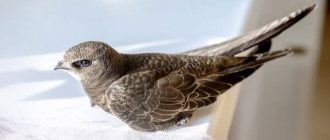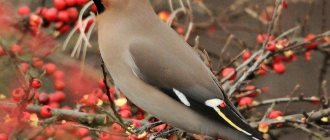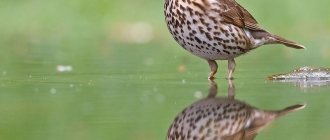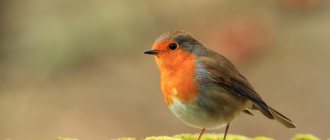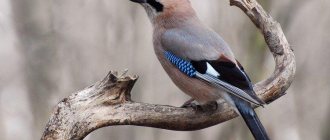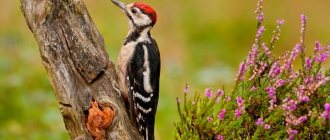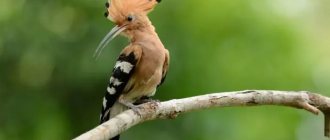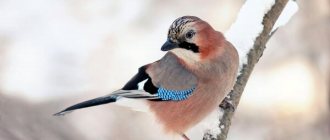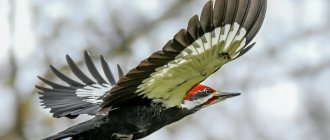Origin of the species and description
Photo: Swallow Author: Svetlana Medvedeva (@msvetlana012018)
The swallow is a small bird belonging to the family of the same name. It belongs to the passerine order. Initially, such birds lived high in the mountains, but over time they adapted to life near humans. Swallows live in villages and easily adapt to difficult urban conditions. Based on their habitat, they are divided into several species.
Only two are best known:
- Urban;
- Village ones.
The first type is very common in countries with temperate climates. These white-breasted birds build their nests, easily obtain food and breed among multi-story buildings. Village killer whales live closer to people. They often make their nests in the attics of residential buildings, barns, and cowsheds. At the same time, they are not at all embarrassed by such close proximity to people. City and village swallows differ from each other not only in their habitat, but also in appearance. The village ones have a pale beige underparts, the urban ones have white plumage below and a white rump.
Video: Swallow
If we talk about the description of the bird, we cannot fail to note its unique ability for fast flight. Swallows move through the air very quickly. The special natural structure of the body helps them in this. They have a long tail, a small streamlined body, narrow and strong wings. This bird is also easy to recognize by its characteristic plumage. She has a dark blue body that shines pleasantly in the sun.
Interesting fact: Members of the swallow family spend most of their lives in the air. They are very rarely seen on the ground. In the air, these birds learned not only to get their own food, but also to sleep and mate for procreation.
Appearance and features
Photo: Swallow bird
It is difficult to confuse a swallow with any other bird. It is small, moves quickly through the air, and has a physique characteristic of all swallows. The body of these birds is slightly elongated and streamlined. The tail is divided into two narrow parts by a cutout, the wings are long and narrow. The head of the animal is slightly flattened, and the beak is very short.
Swallows are very small, no larger than an average sparrow. The body length is usually about seventeen centimeters. The wingspan is from twenty to thirty-three centimeters. The weight is also tiny - only eighteen grams. The color of feathers in different species of the family may differ slightly. From above, these birds are identical - blue-black with a metallic sheen. The bottom is different. City swallows below are pure white, barn swallows are beige.
Interesting fact: The swallow's flight is agile and fast. The rustic species has a more rapid flight. On average, such birds make about five wing beats per second.
Village killer whales may have small brown spots on their necks and foreheads. The legs of all swallows are covered with down. There are no differences in the appearance of females and males. Only young and adult individuals differ from each other. The former have a duller feather color – grayish-black.
Adult and young birds molt once a year. Swallows have a long molting period. It lasts from August to March. The plumage changes gradually: first small, then large. Swallows are small and very sociable birds. But their voice is inexpressive and weak.
general characteristics
Swallows are small birds: their length is about 23 cm, and their weight usually does not exceed 25 g. The wing frame is about 30 cm. Swallows have a fairly elongated and narrow body, almost all birds have a short and thick beak, which is convenient for catching insects during flight. Swallows also have narrow wings and usually a long tail, which helps them feel confident in flight, develop great speed and not get tired even after long flights.
During flight, they are able to easily catch even very fast insects. Due to their wide mouth, swallows easily swallow their prey.
All species of swallows have characteristic features in appearance, but they have similar features:
- Metallic tint of plumage in the back area.
- Large mouth.
- Plumage that fits tightly to the body.
- Long claws.
- The color is the same in both chicks and adults.
The color of the swallow is usually black on the back, the belly is white or beige. Sex differences in birds are practically not pronounced. Males and females can be distinguished by the presence of paler plumage and a short tail, characteristic of females.
The limbs of swallows are poorly adapted to walking on the ground. Therefore, moving them in this way always looks quite awkward. Swallows rarely descend to the ground, as in this position they feel vulnerable.
Where does the swallow live?
Photo: Swallow animal
Swift-winged swallows live in the following areas:
- Northern Europe. The exceptions are Scandinavia, the Kola Peninsula;
- North, South America. In the North these birds live and breed, in the South they winter;
- Africa. They mainly nest in the north of the continent;
- Middle East, China, Japan.
Swallows easily adapt to different territories and can get used to almost any conditions. The exception is if temperatures are too low. The main conditions put forward by these birds to their habitat are the availability of food, water and a suitable place to build a nest. Swallows live both in modern cities and villages, and in the wild - in rocky caves.
They build their nests in agricultural buildings: barns, outbuildings, under overhanging parts of rocks, buildings, bridges. Sometimes the nest can be found even on slow-moving trains. In the wild, such animals settle in light caves and crevices. The nesting altitude does not exceed three thousand meters above sea level. It is extremely rare for swallows to occupy the nests of other birds.
Interesting fact: Little swallows spend almost their entire lives in flight. Twice a year they make long flights, moving from their permanent habitats to warmer climes for the winter. These animals winter in the southern regions. They are capable of covering vast distances. Previously, even scientists found it difficult to believe this, and until a certain time it was believed that swallows hibernate in winter.
Habitat
Despite its fragility and small size, the swallow is a unique bird, whose unpretentiousness allows it to settle in almost any region. The habitat of these birds is incredibly wide.
They do not live only in the Far North, which is due to harsh climatic conditions.
On the territory of modern Russia, two main types of swallows are most common: village and city swallows.
As the names suggest, the city swallow primarily lives within large populated areas. This bird species also settles in rocky areas, building nests in rock crevices.
As for the second species, the barn swallow prefers the most calm and quiet countryside as its main habitat.
The bird often settles in close proximity to open natural bodies of water, which is due to the abundance of building materials for nests, as well as a large number of insects.
If you are interested in finding out what birds live in the Moscow region, we recommend reading the article
What does a swallow eat?
Photo: Barn Swallow
To carry out long flights, fly quickly and reproduce, swallows need protein in large quantities. The little swallow eats a lot, and can feed its chicks about three hundred times a day!
The main diet of these birds consists of various insects:
- small bugs and flies;
- mosquitoes, midges, horseflies;
- various types of butterflies;
- grasshoppers and spiders.
Birds try to avoid poisonous insects. For example, they don't touch bees either. Swallows can be seriously harmed by the sting and poison of such insects. Birds swallow other insects whole. Even the very hard cover of some beetles does not bother them. Such cover is easily digested by the swallow's well-developed digestive system.
A peculiarity of the feeding process of swallows is their method of obtaining food. These birds almost never fall to the ground for food. The entire process of hunting and feeding is carried out in the air. They catch small and medium-sized insects on the fly. The bird takes care of its offspring in the same way - it feeds the chicks right in the air.
Interesting fact: Most of the swallow family hunt at low altitudes. It is there that they find many delicacies for themselves in the form of various insects. People, having noticed low-flying swallows, associated this with weather prediction. However, this bird behavior has nothing to do with rain.
Nutrition
In the diet of all types of swallows, the main dish is insects. Birds catch them in flight. The wide beak of this amazing bird can catch up to 1 million aphids, midges and mosquitoes per year. They can easily catch a dragonfly, cricket or grasshopper in flight. Swallow chicks are especially voracious. Their parents bring them food about 300 times a day.
Features of character and lifestyle
Photo: Swallow
Swallows can lead both a sedentary and nomadic lifestyle. If birds live in areas with a warm climate, then they do not fly anywhere for the winter and lead a sedentary lifestyle. In another case, swallows are forced to make long flights to winter in more acceptable conditions. The migration process is a rather difficult stage for a small bird. Swallows are forced to migrate twice in one year.
The lifestyle of these animals is quite active. They rarely rest, are constantly in search of food for themselves and their offspring - and all this is in the air. For this reason, swallows have poorly developed, weak, short limbs. Their paws are not adapted for moving on the ground. They rarely get that low and walk on the ground. The only exception may be the process of collecting material for building nests.
Swallows can fly both very low and high. They are very fast. In this regard, they are second only to swifts, with which people often confuse them. Swallows can reach flight speeds of up to one hundred and twenty kilometers per hour. The character of these birds is not warlike, but rather peaceful. For example, even if a stranger settles in their nest, the swallow will not attack, but will simply hover restlessly around the house. If this does not scare away the uninvited guest, then she will simply begin to build a new nest nearby.
Social structure and reproduction
Photo: Swallow bird
Swallows are monogamous birds. If they create a couple, then it will last for a long time. Cases of polygamy are quite rare in this family. The formation of pairs begins with the arrival of the first warmth - in early spring. At this time, the males spread their tails and chirp loudly to attract the attention of the female they like.
Having found a suitable partner, the birds begin to mate. During the season, each female manages to hatch two broods of chicks. The female lays no more than seven eggs at a time. Most often - four or five. Then the parent swallows incubate the eggs for about sixteen days. They do this in turns. The chicks are born very tiny. Their size rarely reaches even four centimeters.
The chicks are born absolutely helpless; at first they have no plumage at all. In the first weeks, all concerns about the offspring fall entirely on the new parents. They feed the babies together for three weeks. Then the birds spend several days training the young. They teach them to catch insects and fly. Next, the offspring leaves the parental nest and joins the rest of the swallows.
The life of swift-winged swallows is not so long, on average four years. However, there are exceptions in nature. Some individuals live up to eight years. Females can give birth to offspring within a year after birth. The first brood is usually small, the second and all subsequent ones are much larger.
Migrations
The bird flies to central Russia in late April - early May. First, individual individuals appear, and only later, after a week, do the rest arrive. Hence the saying: “The first swallow does not make spring.” At the end of summer, birds gather in large flocks, at which time they can often be seen sitting on wires. Departure occurs at the end of August - September.
Natural enemies of swallows
Photo: Swallow in flight
The swallow is a small, defenseless bird. But she is unlikely to be an easy target. It has few natural enemies due to the fact that the swallow can develop enormous speed. You just can't keep up with her. It is thanks to their flying qualities that swallows almost never become victims of mammalian predators. An exception would be when a bird falls to the ground due to a wing injury.
Interesting fact: Swallows are migratory birds. More often than not, they die not because of attacks from enemies, but because of difficulties that arise during long journeys. So, during a flight, an entire flock may die due to bad weather conditions.
Barn swallows are often hunted by the Hobby Falcon. This is the most dangerous enemy of small birds. He is just as fast, easily catching his prey right in the air. Sometimes a falcon waits for birds near a pond. Swallows are very vulnerable when collecting material to build their own nest.
Various parasites and endoparasites can also be called enemies of swallows. Their body and organism are harmed by ticks, fleas, and malaria. There is even a separate characteristic flea for this type of bird. It is called Ceratophyllus hirundinis. Birds can get malaria from mosquitoes.
